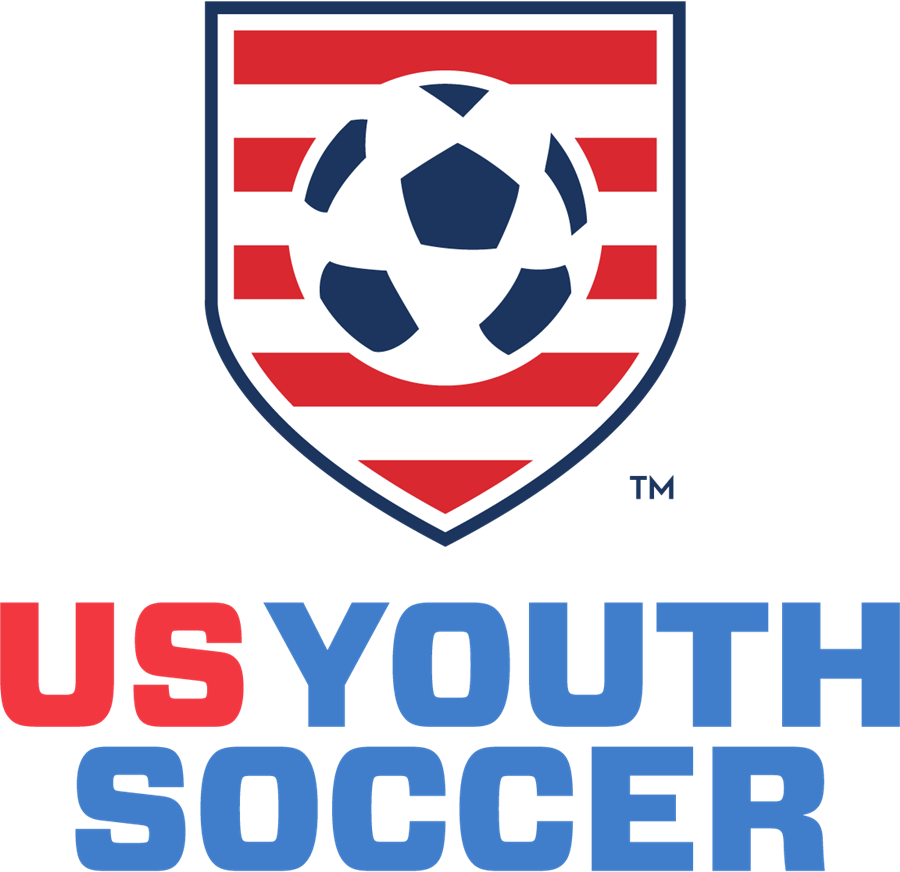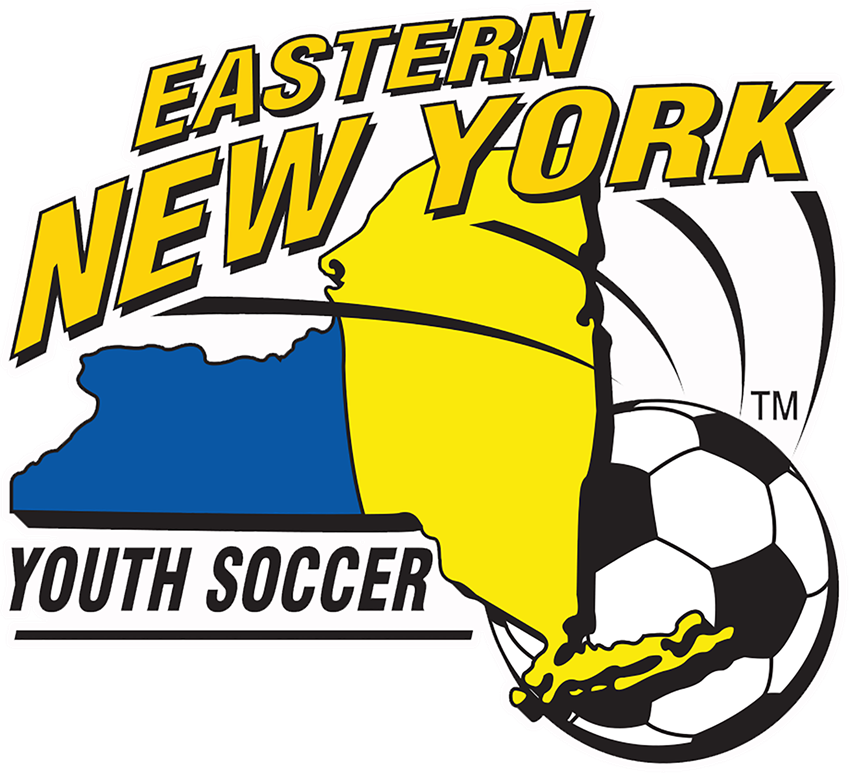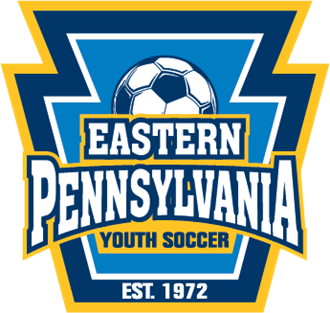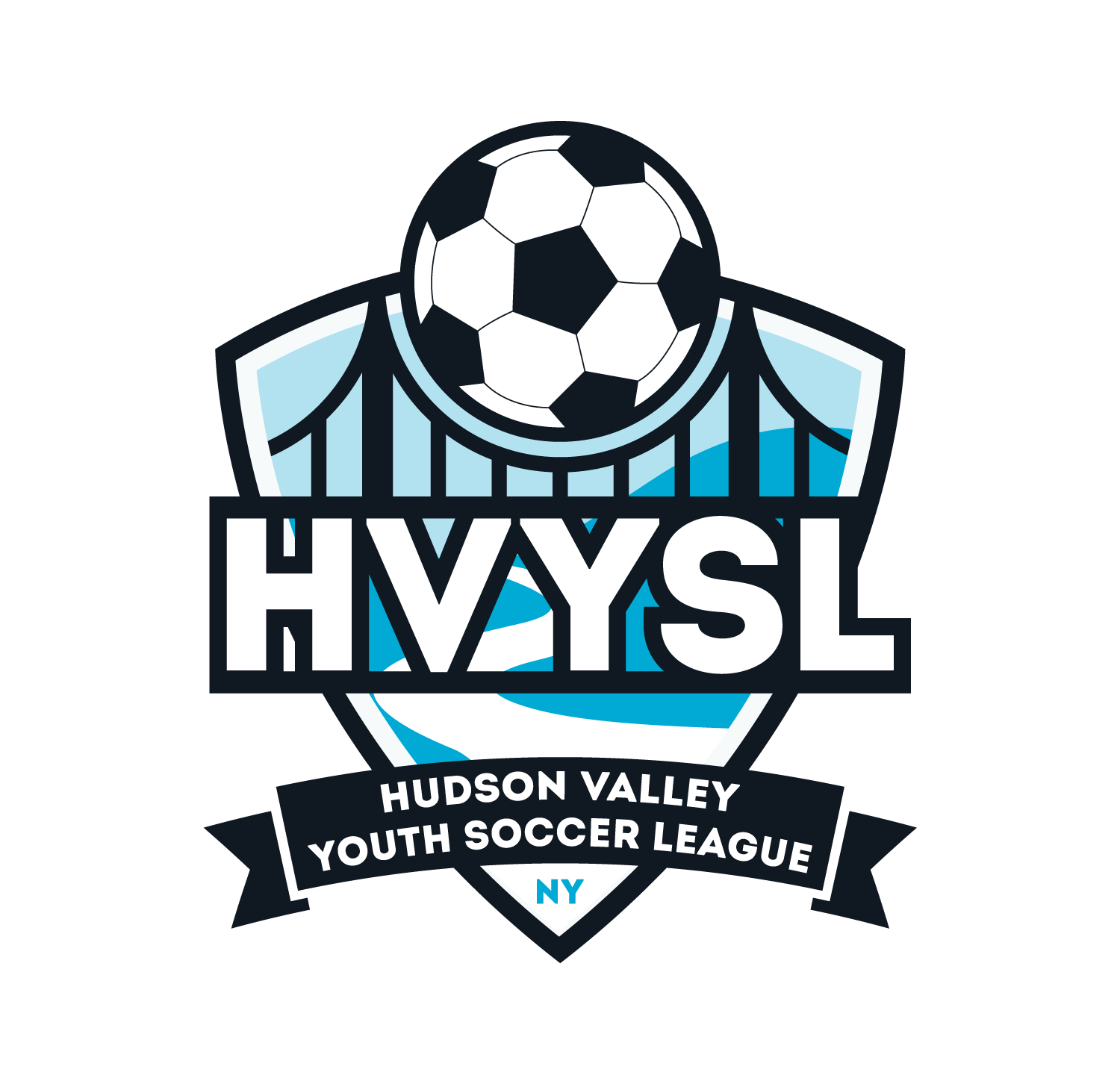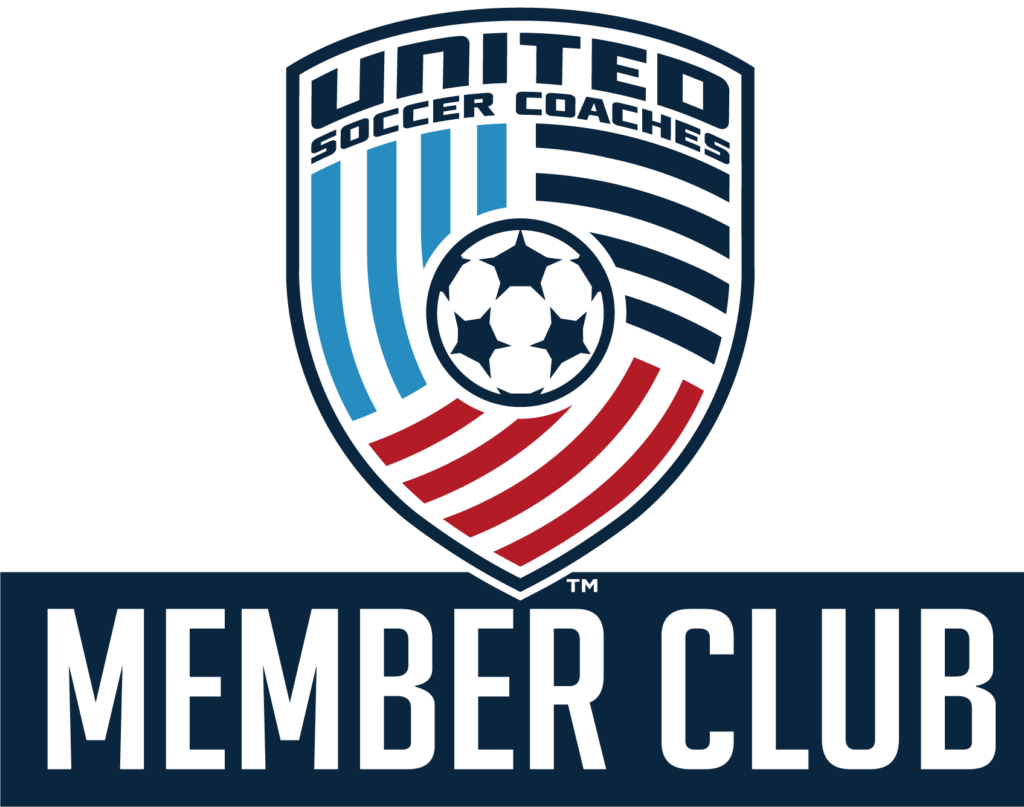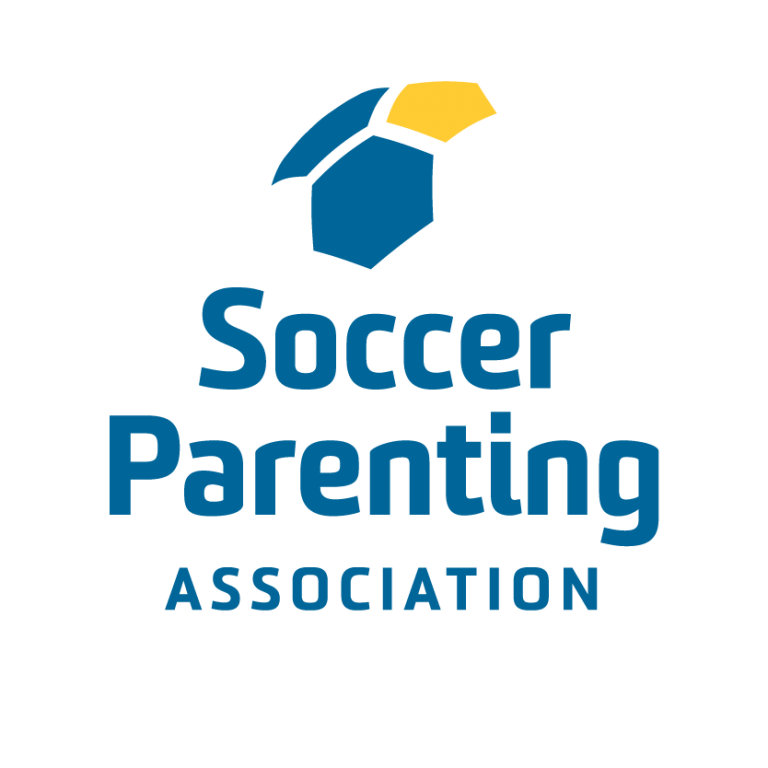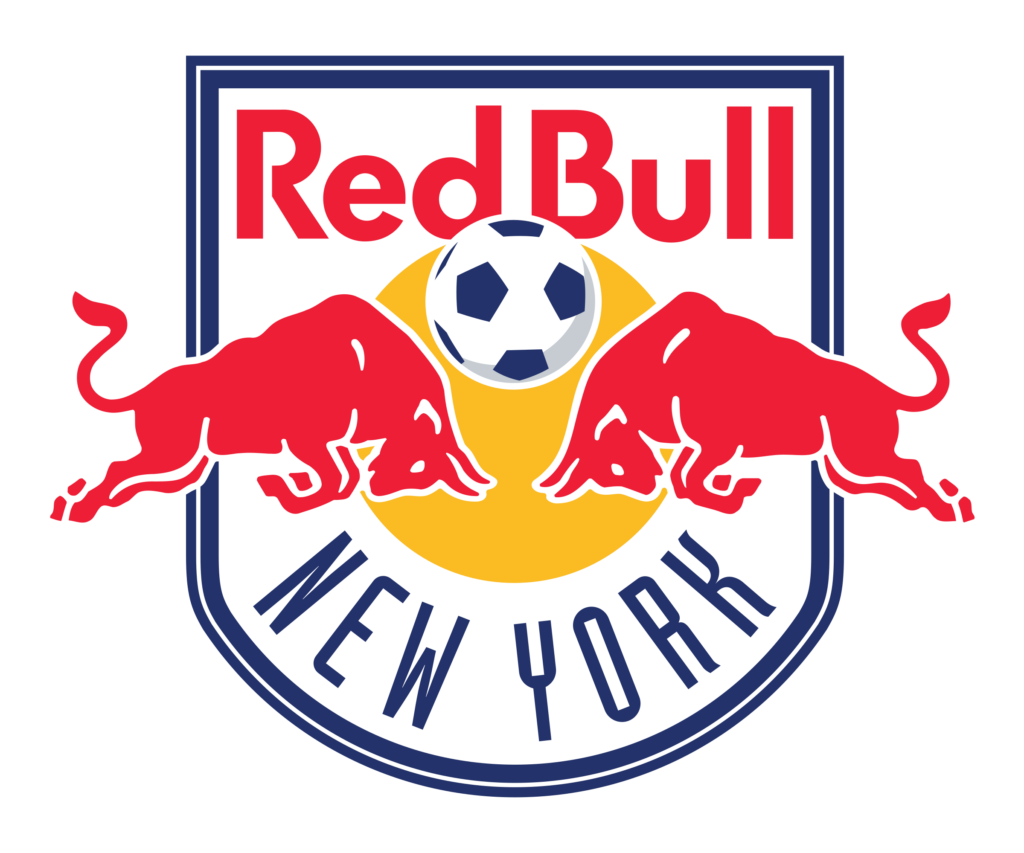RULES OF COMPETITION
The following rules of competition shall govern all playing divisions except in cases where specific modifications have been made.
* The results of all games are final. There are no protests.
Goal Differential
While the league makes every effort to structure teams on a balanced basis, there will be games where one team has the opportunity to outscore the opponent by a large goal differential. EPYSC is a recreational soccer program that promotes sportsmanship and will not tolerate embarrassing displays of one-sided scores. Therefore, all games are subject to our Goal Differential Rule.
If a team defeats another team by six (6) or more goals, the winning team will forfeit the win and the game will be recorded in the standings as a tie, meaning the winning team does not record a win and the losing team does not receive a loss.
Eastern Pike Soccer reserves the right to apply penalties to a coach for disregarding or repeatedly violating this rule which may include, but not be limited to, suspension from the next match or removal from their position for the balance of the season.
This rule puts great responsibility on our volunteer coaches so we have outlined some helpful guidelines for game day.
-
Take Action Early - The biggest mistake coaches make is waiting until the score is 3-0 or 4-0. Most of the time you can tell early on in the game if your team is going to dominate. Start doing the things necessary to avoid an excessive goal differential early on in the game when the score is 2-0.
-
Move Positions - Take your most effective goal scorer and place them on defense, have them play goalie or limit their playing time to one-half of the game. Place your weaker players on offense. This is a great opportunity to let players experience some positions they may not get to play on a regular basis.
-
Play Short - Start pulling players off the field. Play 1 man down (e.g. pull a player from the attacking side, not a defender) when you hit a two or three goal differential. Play two men down or even three down when you hit a three or four goal differential. If the opposing team closes the gap, you can always add players back on but you don't have to if it's a more competitive game.
-
Impose Restrictions - Put some limitations on your players to challenge their skills and make it more difficult for them to score goals - particularly for older players. Examples include:
-
Shots can only be taken with the left (weaker)
-
Shots can only be taken outside of the 18-yard goal box.
-
Set a midfield boundary your offensive players cannot cross midfield.
-
Set a minimum number of passes before a shot, tell your players they must have a set number of passes or touches before anyone can take a shot, and you've got to start over at 1 every time the opposing team touches the ball.
-
-
If you are the team scoring the goals - screaming from the sidelines - "Don't score any more goals" or "Let them score". This will only further embarrass the opponent. Discuss the Goal Differential Rule with your team during a practice session and explain the steps you will be taking during the game to avoid unsportsmanlike conduct. But don't rely on your players (kids) to manage the game this is your responsibility.
-
If you are the team giving up the goals - screaming from the sidelines "Let them Score" or "Kick it in our Goal". The opposing coach should be taking action to respect the Goal Differential Rule and promote good sportsmanship. Do not undermine the efforts of the opposing coach to respect this rule! This does nothing for your players and shows no respect for the game.
-
Anticipate that last second goal. Don't stop scoring at the edge of the rule and find out one of your players scores in the final minute. If you beat the opponent by six or more goals, you violated the rule. The circumstances do not matter. As a coach, you need to anticipate.
-
The goal differential rule applies to the score of the game at the conclusion of the match not during the course of the match or the score at halftime. The game is never stopped during the course of the match and the final score is the only score that matters.
Scheduled / Rescheduled Games
- All games shall be played in accordance with the published schedule. Exchanges of opponents will not be permitted. Games will not be rescheduled for any reason.
- League officials are authorized to postpone any game, prior to its commencement, due to inclement weather or field conditions.
- The referee can abandon a game at any time due to climate or field conditions, or for any other reason set forth in the rules.
- If a game is abandoned by a league official or referee before the first half has been completed, the game shall be rescheduled in its entirety. If the first half has been completed, the game will be considered an official game and the results will stand.
- A fifteen minute grace period, from the scheduled start time of the game, will be allowed for the appearance of the assigned referees. In the event that neither referee appears, the coaches must contact the on-field Referee Coordinator. Games played under these circumstances will be valid.
Both teams must have a ball available for game use. The home team shall supply the game ball.
| Division | Ball Size |
|
U-5 |
3 |
| U-7 | 3 |
| U-9 | 4 |
| U-12 | 4 |
| U-15 | 5 |
All players must play at least half of every game, though not necessarily continuously, with the following exceptions:
- Consistent, unexcused absences from practice (school practices are considered excused absences
- Unexcused lateness to a game; here the player will be deemed to have played in the part of the game he/she missed.
Any coach who intends to keep a player out of a game or have them play less than half a game, must consult with their division coordinator prior to the game.
Club Logo, Colors, Uniforms & Likeness
The Eastern Pike Youth Soccer Club’s logo shall be as approved by the Board of Directors.
The Club colors shall be Black and Red.
All uniforms shall be approved by the Board of Directors on an annual or biennial basis. All Club uniforms shall be of a similar style and color as to represent the Club. Uniforms for travel and tournament teams shall be of the Club colors. Uniform colors for recreation teams shall be chosen as to not cause confusion amongst teams. The Club logo will adorn the left chest of all uniforms.
The Club logo, name, and likeness shall not be used without prior authorization by the Board of Directors. Requests to use the Club logo, name, or likeness in any manner other than for regular Club business shall be submitted to the Board of Directors no less than thirty (30) days prior to the next scheduled Board of Directors meeting. Requests for approval of uniforms shall be submitted to the Board of Directors no less than thirty (30) days prior to the next scheduled Board of Directors meeting. All requests shall be full and complete with renderings and explanations so that the Board may fully understand the request.
- All players are required to wear their uniform shirt, shorts and socks (U-4 and U-6 only receives a jersey). Street apparel shall not be worn by the players (except for U-4 and U-6 Division players).
- All players are required to wear shin guards beneath their socks and cleats or the player can not play in the game, no exceptions!
- The goalkeeper must wear a jersey or pinny that is a different color from that of either team. The goalkeeper may wear gloves.
- In cool weather sweatpants and sweatshirts may be worn beneath the team uniform. Hooded sweatshirts must be tucked beneath the uniform shirt.
- The following are prohibited and may never be worn:
- Metal cleats of any kind
- Sharp or badly worn cleats
- Jewelry, such as rings, watches, necklaces, bracelets, earrings, pins (this applies to those items made of rope as well)
- Metal or plastic hair clips or hair beads
- No orthopedic braces with exposed metal or hard plastic
- No hard casts (wrist, arm, etc.)
- Helmets, baseball caps or visors
- Non-prescription glasses or sunglasses
All permitted devices worn for medical purposes must be approved by the league prior to the game.
Team and Club officials at a game site or other location to participate in a game or other Club event may only have on outer wear with the name, logo, or other identifying mark of the Club or organization that is an affiliate (USSF, USYS, ENYYSA, EPYSA, EHYSL, etc…) of the Club. A name, logo, or other identifying mark of any other youth soccer organization that is not an affiliate of the Club must be removed, replaced, or covered.
Travel team officials shall be wearing appropriate attire on gameday and at all practices and events. Whenever possible, all travel team and Club officials on the team sideline should be displaying the Club logo on their outer wear.
Game Day Rules
- All games, except for U-4 and U-6, will consist of four quarters of equal length with one minute intervals after the first and third quarters and a five minute interval after the second quarter.
- The duration of the games is a follows:
| Division | Length of game |
| U-8 | 12-minute quarters |
| U-11 | 15- minute quarters |
| U-14 | 30-minute quarters |
- All games will be played with running time. The clock will only be stopped at the end of each quarter and half. It will not be stopped at any other time except for a serious injury to one of the players and the referee calls a time out. The referee is the official timekeeper of every game.
- A coin toss determines the direction of play and possession of the ball.
- The visiting team calls the toss. The winner of the toss shall have the choice of either possession of the ball or direction of play.
- Ball possession and direction of play shall be reversed at the start of the third quarter.
- A kickoff is used at the start of the game and after a goal is scored. At the moment of kickoff all players must be within their half of the field.
- The ball is kicked from the center of the field and is in play once the ball has traveled its own circumference forward. The kicker cannot play the ball again until it has been touched by another player.
- The ball is out of play when it wholly crosses the goal line or touch line, whether on the ground or in the air, or when the referee has stopped play.
- The ball is in play at all other times including:
- When it rebounds off a cross-bar or goal post.
- When it touches an official on the field.
- When the ball travels its circumference after a kickoff.
- When a drop ball touches the ground.
- When a throw-in breaks the plane of a touch line.
- A drop ball occurs when:
- Opponents simultaneously cause a ball to go out of bounds.
- The ball becomes deflated.
- Following the temporary suspension of play for an injury or unusual situation and neither team has clear possession of the ball.
- Opponents commit simultaneous fouls of the same degree.
- The spot of a drop ball is:
- Where the ball becomes dead.
- Five yards inside of the boundary line.
- The drop ball is held between two opponents and cannot be played until it touches the ground. Should the ball be played before it touches the ground the referee shall drop the ball again. If the same player continues to play the ball before it hit s the ground, he/she will be replaced by another player. Other players may be positioned anywhere, provided they do not interfere with the play.
- A goal is scored when the ball wholly passes over the goal line, between the goal posts and under the crossbar. One point is awarded for each goal.
- A goal may be scored during play directly from
- Direct kick.
- Corner Kick.
- Drop ball.
- Goalkeepers punt or throw.
- A goal may not be scored during play directly from a throw-in.
- Free kicks are classified as either direct or indirect.
- A direct free kick is one from which a goal can be scored directly by the kicker without another player first touching the ball.
- an indirect free kick is one from which a goal cannot be scored directly by the kicker - the ball must first touch another player before it enters the goal - this player can be from either team
- Free kicks shall be taken from the point of an infraction with the following exceptions:
- If an indirect free kick is awarded to the attacking team in the opponents goal area the kick must be taken from the goal line at the point nearest to where the infraction occured.
- If a direct kick is awarded to the attacking team in the opponents goal area the kick becomes a penalty kick and is taken from the penalty line.
- If a coach or player from the sideline enters the field without permission an indirect kick will be awarded to the opposing team at the place where the ball was when play was halted.
- If play was halted for an injury and one team had clear possession of the ball, an indirect kick will be awarded to that team at the place where the ball was when play was halted.
- If play was halted because of misconduct by any individual on the sideline, an indirect free kick will be awarded to the opposing team at the place where the ball was when play was halted.
- When a player is taking a free kick outside his/her own team s penalty area, all opposing players must be at least 10yards from the ball in every direction, unless they are standing on their own goal line between the goal posts.
- When a player is taking a free kick within his/her own team s penalty area, all opposing players must be outside the penalty area and at least 10yards from the ball in every direction. All free kicks taken within the penalty area by the defending team must clear the penalty area before the ball can be touched by another player. Free kicks that do not leave the penalty area will be taken again.
- When taking a free kick, the ball must be stationary when kicked and is in play once it travels its own circumference. If not done correctly the kick shall be taken again.
- Once in play, the ball cannot be kicked a second time by the kicker until it has been touched by another player from either team. A violation of this rule will result in an indirect kick being awarded to the opposing team at the point of the infraction.
- Offside position is defined as the following, "if the player does not have the ball and there are less than two opposing players between them and the opposing teams goal line." Usually one of these players is the goalie of the opposing team but it does not have to be. It is not an offside offense in itself to be in an offside position.A player is not in an offside position if the player is:
- In their own half of the field of play.
- Level or even with the second to last opponent.
- Level or even with the last two opponents.
- In an offside position during a throw-in, corner kick, goal kick or drop ball.
- Offsides occurs when the player is in an offside position when the ball is kicked or played, not when it is received. A player in an offside position is only penalized if, at the moment the ball touches or is played by a teammate, the player is, in the opinion of the referee, involved in active play by:
- Interfering with play or;
- Interfering with an opponent or;
- Gaining an advantage by being in that position.
- The penalty for an offside call is an indirect kick from the spot of the infraction, unless the infraction occurs within the goal area in which case the kick shall be taken from anywhere within the goal area.
- A Direct free kick is awarded to the opposing team if a player commits any of the following fouls:
- Attempts to kick or kicks, strikes or jumps at an opponent
- Trips an opponent
- When a goalie attempts to or strikes or pushes an opponent
- When a player other than the goalie plays the ball with their hands in the penalty box
- Pushes or holds an opponent
- Unfairly charges an opponent (feet of attacker leave the ground)
- Charges the goalie, who has possession of the ball
- An Indirect free kick is awarded to the opposing team when a player commits any of the following fouls:
- If the ball is played twice by the kicker following a kickoff, free kick,goal kick (that leaves the penalty area), a corner kick or by the thrower of a throw-in before.
- It has been played by another player.
- Offisides.
- Fairly charges an opponent when neither is within playing distance of the ball.
- Interference - a player without the ball deliberately obstructs an opponent who is attempting to play the ball or interferes with a goalies attempt to release the ball into play.
- If a player kicks or attempts to kick the ball while in possession of the goalie.
- Dangerous play - such a kicking above the waist or playing the ball from a prone position on the field.
- If a goalie holds onto the ball for more than six (6) seconds before releasing the ball into play.
- If the goalie plays the ball a second time after releasing it into play before it has been played by another player.
- If a player deliberately passes the ball to their goalie and the goalie plays the ball with his/her hands - a goalie may use their feet to play the ball under these circumstances.
- A yellow card will be issued to players or coaches for an infraction of any of the rules of good sportsmanship, including but not limited to:
- Arguing with the referee.
- Disruptive behavior.
- Slide tackling.
- A red card will be issued to players or coaches under the following circumstances:
- A second infraction of the rules of good sportsmanship when committed by a player or coach who had previously received a yellow card.
- When a first offense is severe, flagrant or of an extremely dangerous nature.
- Use of profanity.
- Slide tackling from behind.
- If a red or yellow card is issued, coaches must identify all persons receiving yellow or red cards to the referees.
- When the offender receiving the red card is a player or coach, he/she will be expelled from the game and must leave the field immediately. Failure to do so will result in an abandonment of the game by the referee and the game will be declared a forfeit.
- Any person expelled from a game may not participate in the team s next game. Failure to abide by this rule will result in the forfeiture of that game.
- Where the offending person is a spectator, the spectator will receive the card. A red card issued to a spectator will result in ejection from the premises.
- Any game abandoned due to the refusal of a coach to field a team, will result in a forfeiture of that game.
-
- A penalty kick is awarded when the opposing team commits an infraction, which would normally result in a direct kick, in the their own penalty area.
- When a penalty kick is taken the following rules must be adhered to:
- All players except the kicker and the opposing goalie must be outside the penalty area and at least ten (10) yards from the penalty line.
- The opposing goalie must stand on the goal line until the ball is kicked from a stationary spot on the penalty mark.
- The goalie can only move horizontally along the goal line.
- The kicker cannot kick the ball until he/she receives a signal from the referee.
- After the kick, the kicker cannot play the ball a second consecutive time.
- Once the ball has moved its circumference, it is in play.
- The following chart refers to violations committed during a penalty kick:
Violator Result Penalty Award Defensive player Goal not scored Re-kick awarded to kicking team
Defensive player Goal scored Infraction waived - goal stands
Offensive player Goal scored Kicking team must take the kick again
Offensive player Goal not scored If the ball went over the goal line then a goal kick is awarded; if the ball went into play then an indirect kick is awarded to the defending team.
- A throw-in is awarded when the opposing team last touches or plays a ball before the entire ball passes beyond the touch line, either in the air or on the ground.
- The following must be adhered to when making a throw-in. A violation of these rules will result in the throw-in being awarded to the opposing team:
- The throw must take place at the spot where the ball went out of bounds.
- The player taking the throw must face the field of play and have both feet behind the touch line when releasing the ball.
- The player must use both hands with equal force and deliver the ball from behind and over their head in one continuous motion.
- The player may not twist their torso to change the direction of the throw. (The players body must stay straight).
- If the throw-in fails to clear the plane and enter the field of play, it shall be re-thrown.
- If the player taking the throw-in plays the ball a second time before it has been touched by another player, an indirect kick will be awarded to the opposing team at the spot of the infraction.
- A goal kick is awarded to the defending team when the opposing team last touches or plays the ball before it wholly crosses the goal line, in the air or on the ground - excluding that portion within the goal posts or under the cross bar.
- The following must be adhered to when taking a goal kick:
- The ball shall be kicked from any spot within the goal area.
- The ball must be stationary when kicked.
- All players on the opposing team must be outside the penalty area.
- The ball cannot be played by either team until it has cleared the penalty area .
- If the ball fails to clear the penalty area, the goal kick will be re-taken.
- If, after clearing the penalty area, the kicker plays the ball a second time before it has been played by another player, an indirect kick will be awarded to the opposing team at the spot of the infraction.
- A corner kick is awarded to the attacking team when the opposing team last touches or plays the ball before it wholly crosses the goal line, in the air or on the ground - excluding that portion within the goal posts or under the cross bar.
- The following must be adhered to when taking a corner kick:
- The corner kick shall be taken from corner of the field nearest the point where the ball went out of play.
- All players of the opposing team must be at least 10 yards from the ball until it is kicked.
- The ball must move its full circumference before it is in play.
- If, after moving forward its full circumference, the kicker plays the ball a second time before it has been touched by another player, an indirect kick will be awarded to the opposing team at the spot of the infraction.
- Slide tackling is prohibited in all divisions of Eastern Pike Soccer. Any player making a slide tackle will receive a Yellow Card and a warning from the Referee. Should the same player make another slide tackle in the game, they will receive a Red Card, resulting in Ejection from the game. Any player receiving a Red Card will also be ineligible for the next game played.
- Slide tackling from behind is prohibited in all divisions of Eastern Pike Soccer, and will not be tolerated. Any player making a slide tackle from behind will receive a Red Card, and be immediately ejected from the game. That player will be ineligible for the next game played. That player will be reported to the Rec Director.
- No other player will be allowed to replace the ejected player, and the team will play minus that player for the remainder of the game.
- At this age, players should remain on their feet (except for the goalkeeper) or going for a header. This is for the safety of the players.
Overly aggressive play is not allowed in any division of Eastern Pike Soccer. Intentional Fouls such as tripping, slide tackles, trying to injure your opponent, foul language, challenging the referee, etc. will not be tolerated. Such play will result in warnings, Yellow and Red Cards, based upon the severity of the foul, as noted above.
CODE OF CONDUCT
Poor conduct by parents, coaches or players will not be tolerated.
Poor sportsmanship, bad language, challenging taunts, etc. take away from the game, and are in direct violation of what Eastern Pike Soccer stands for.
Remember, we are out here for the kids to learn and play the game of Soccer. Parents and Coach's should be encouraging and positive. Respect the Referee, as He/She is in charge on the field of play. Calls may be missed, or sometimes called incorrectly, and that happens in all sports. Verbal attacks or challenges of the Referee may result in game stoppage, warnings and Yellow or Red cards being issued, and if serious enough, forfeit of the game. This must be approved by the Recreation Director in charge.
Should a parent receive a red card, they will be expected to leave the field immediately. If this happens, and the child must leave also, the coach may substitute another player. Should a parent ever receive a red card, the referee and coach will report this information to the Recreation Director, who will report to the Eastern Pike Soccer Board of Directors for review. Should this happen more than once, the Board may take action, which may include removal of the child from their team for the remainder of the season.
Should a Coach receive a Red Card, the Referee will report this to the Rec Director, who will report to the Eastern Pike Board of Directors. Should this happen again in the same season, the Coach may be restricted from coaching for the remainder of the season.
Players receiving yellow and/or red card(s) is addressed above in the rules.
- Make Soccer participation for your child, and others, a positive experience.
- Remember that a child is easily affected by outside influences.
- Be kind to your child's Coach and Referees. The Coach is a volunteer giving of personal time to provide a recreational activity for your child.
- The Coach is providing a valuable community service, often without reward other then personal satisfaction. Without them your child could not participate.
- Applaud good plays by your team AND the opposing team.
- Parents should be cheerleaders. Allow the Coach to coach, the Referee to officiate, and most of all your child to play the game to their best ability.
- Between the exuberance of the winner, and the disappointment of the loser,we have the Referee. All of them follow the same creed, to watch every movement of each player, and to call the game to the best of their ability.
- Do not openly question their judgement, and never their honesty. They are a symbol of fair play, integrity, and sportsmanship.
- Accept the results of each game and encourage your child to do the same. Be gracious in victory, and turn defeat into victory by working toward improvement.
- Disputes, questions, or concerns are to be directed to the Rec. Director, at the playing fields.
- Play the game for the game's sake. Have FUN.
- Be generous when you win. Be graceful when you lose.
- Be fair, always.
- Obey the laws of the game. Work for the good of your team. Soccer is a TEAM sport.
- Accept the decisions of the officials with good grace. Believe in the honesty of your opponents.
- Conduct yourself with honor and dignity at all times.
- Honestly and wholeheartedly applaud the efforts of your teammates and your opponents.
- Win or Lose, congratulate your opponents on a good game.
- Soccer is a game, let's keep it fun and enjoyable.
- Opposing team and spectators are honored guests.
- No advantages except those of superior skill should be sought.
- Officials and opponents should be treated and regarded as honest of intention.
- Officials must be respected.
- Official decisions should be accepted without looking or acting angrily, no matter the circumstances.
- Winning is desirable, but winning at any cost defeats the purpose of the game.
- Losing can be a triumph when the team has given its best.
- The ideal is the greatest good to the greatest number.
- In Soccer, as in life, treat others with respect.
FIFA'S LAWS OF THE GAME
EPYSC is governed by the United States Soccer Federation (USSF) and adheres to the recommendations of FIFA and USSF for small sided games.
- U-6 games will be 6 v 6, NO GOALIES
- U-8 games will be 7 v 7 (6 field players and goalie)
- U-11 will be 9 v 9 (8 field players and goalie)
- U-14 will be 11 v 11 (10 field players and goalie)
- U-4, U-6, & U-8 – Size 3
- U-11 – Size 4
- U-14 – Size 5
- Throw-Ins
- Throw-Ins will be taken when the ball goes out of bounds on the sideline.
- The player taking the throw in must keep both feet on the ground and throw directly over their head, using both hands, without twisting.
- Goal-Kicks
- Goal-Kicks are taken when the attacking team touches the ball last prior to it going over the end line of the goal they are trying to score on.
- The defending team will kick the ball from in front of their goal.
- For U-6 and U-8 teams, the opposing team must stand roughly half-way between the goal and the half line and wait for a second player of the the half-line. They must allow the opposing team to touch the ball before they can run toward the ball.
- Corner-Kicks
- Corner-Kicks are taken when the defending team touches the ball prior to it going out of bounds over the end line of the goal they are defending.
- The ball is placed in the corner and the attacking team kicks the ball towards the goal.
- Off-sides
- U-4, U-6, U-8: Encourage the players to play the game with the intent with which it was meant to be played. Therefore, one player should not be put in front of the opposing team’s goal waiting for the ball to be kicked to them.
- U-11 and U-14: Referees will enforce off-sides.
- NO hands!
- NO slide tackling, at ANY age
- NO heading, except in U-14 games
- Goalies should only use their hands within a couple yards of the goal. Use your discretion as there will not be boxes painted on most fields.
- Encourage and help all players on both teams.
FUNDRAISING POLICY
As a non-profit organization that prides itself on maintaining one of the lowest registration fees in the tri-state area, the club must rely on sponsorship and fundraising to fund a portion of its annual budget. The fees charged to players do not cover all costs of the operation of the program.
A fundraising committee shall be established annually by the Board of Directors of EPYSC. Whenever possible, fundraisers will be club-wide so as to reduce the number of local businesses being solicited each year. Further, this will ensure that multiple teams are not hosting overlapping fundraisers and to ensure that the club needs are met before individual teams are permitted to fundraise. After the club has met its obligations, any additional funds that have been raised may be disbursed among teams that participated in the fundraisers.
I. Fundraising Description
This list shall not be inclusive of all opportunities but shall serve as a guideline for the types of fundraisers that shall be approved:
Club wide Fundraisers:
- Goal-a-thon
- 5K race or similar races
- Cruise raffle
- Concession stand sales
- Spring Clinic
- Sponsorships
Team Fundraisers:
- Candy bar sales or similar individual sale items
- Holiday present wrapping
II. Approval
- All fundraisers shall be approved by the EPYSC Board of Directors prior to advertising.
- Fundraising approval forms, as created by the Fundraising Committee and approved by the EPYSC Board of Directors, shall be submitted to the Fundraising Committee for consideration prior to presentation to the EPYSC Board for approval.
- In order for a team to receive approval for an individual team fundraiser, that team shall have at least 50% of the requested funds in their team bank in order for the club to cover any preliminary costs of the fundraiser. If a team does not have the necessary funds, the team may appeal to the Board to override this subsection with a two-thirds (2/3) vote of the Board.
- Any individual team fundraiser that overlaps or interferes with a club wide fundraiser will be denied.
- Any fundraisers that are prohibited by law due to EPYSC’s non-profit status will be denied.
III. Participation
- All teams are required to participate in all club-wide fundraisers.
- The Board of Directors shall establish a minimum amount that each team is responsible for raising for each club-wide fundraiser.
- If a team does not participate in a club-wide fundraiser, they will not be allowed to fundraise individually and will not benefit from a disbursement of funds from the club.
IV. Finances
- EPYSC Board of Directors shall provide to all coaches, team managers, parents, and players a letter for each fundraiser that explains what the funds raised will be used for. It is the responsibility of the coaching staff to encourage participation for all club wide fundraisers.
- If a team is approved for an individual fundraiser, it is the responsibility of a designee from the team to submit a record of all funds raised to the Treasurer within seven (7) days of completion of the fundraiser. The team shall designate a person that will be responsible for collecting fundraiser money and that person’s name will be on the approval form.
- For all club wide fundraisers, the Board of Directors shall establish a designee for each team and a timeline for when funds are due to the Treasurer. If a team fails to submit any or all portion of funds raised to the Treasurer by a deadline, the following will occur:
- First, the treasurer will attempt to contact the designee to collect fund and will keep a written record of when contact was attempted.
- If the treasurer is unsuccessful, he/she will inform the Board of Directors. The Club President or Chairman of the Board will attempt contact, as directed by the Board.
- If the first two attempts are unsuccessful, a certified letter will be sent to the designee with information about the first two attempts of contact. This letter will inform the designee that if money is not collected by a specific date, the Board of Directors will contact the appropriate local law enforcement agency.
- EPYSC Board of Directors shall be responsible for establishing and maintaining a budget annually and for directing the fundraising committee of a monetary amount that shall be fundraised each year in order to meet all obligations.
- Once all annual obligations are met, EPYSC Board of Directors may establish any long-term goals for the club and shall designate a monetary amount for this purpose, as necessary.
- After all short- and long-term obligations are met, the EPYSC Board of Directors shall return to the teams any money beyond that which each team was required to raise so that individual teams can participate in tournaments, leagues, etc. No money from fundraisers may be used for any purpose other than registering for a soccer related event or equipment (i.e.- tournaments, leagues, soccer balls)

